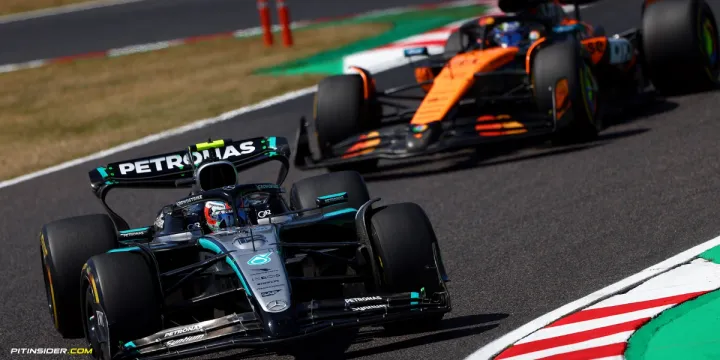FIA Investigation into bizarre Shanghai F1 grass fires continues
The FIA is investigating the mystery behind the peculiar grass fires that disrupted the opening day of the Chinese Grand Prix.

The Chinese Grand Prix weekend got off to an unusual start as two separate grass fires broke out along the circuit, leading to a red flag during FP1 and a brief delay before the SQ2 on Saturday.
The fires erupted on the grass located on the inside of Turn 7, raising safety concerns and prompting immediate investigations by the FIA.
Initial findings and theories
Upon examining video footage, the FIA initially suspected that sparks generated by the new generation of ground-effect Formula 1 cars, which run closer to the ground, were being blown onto the grass, igniting the fires.

However, the magnitude of the blazes was far greater than what would be expected from simple grass fires, suggesting the presence of an additional catalyst.
Several theories have emerged to explain the phenomenon, including the possibility of methane gas seeping through the ground, as the track is built on a swamp, or the grass being chemically treated, which could contribute to the intensity of the fires.
FIA's ongoing investigation
Despite initial physical inspections on Friday yielding no conclusive evidence, the FIA is determined to get to the bottom of the issue.

Plans are in place for a more thorough examination of the affected area in the evening, as the governing body seeks to identify the root cause and prevent any potential disruptions during the remainder of the race weekend.
The FIA's priority is to ensure the safety of all participants and avoid any incidents that could necessitate session stoppages, safety car deployments, or other interventions that could impact the race itself.
The appearance of these grass fires is an unprecedented occurrence at the Shanghai International Circuit, raising questions about the potential impact of the new ground-effect Formula 1 cars on the track environment.

The intense sparking generated by these cars, combined with any potential environmental factors specific to the circuit's location, may be contributing to the unusual phenomenon.
Resolving this issue is crucial not only for the smooth running of the Chinese Grand Prix but also for understanding potential risks and developing appropriate countermeasures at other circuits that may be susceptible to similar occurrences.
The FIA's investigation will likely delve into the technical aspects of the new cars' designs, as well as any potential track-specific factors that could be exacerbating the problem.
Addressing this issue proactively is essential to maintaining the highest standards of safety and fairness in Formula 1 racing.





Comments ()